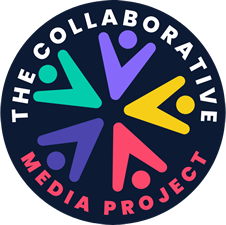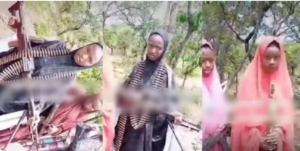By Emmanuel Obe
On June 2, 2016, Vice-President, Yemi Osinbajo, unveiled a plaque and planted a tree at Tenalo Creek, Bodo City in Gokana Local Government Area of Rivers State to kick off the commencement of the implementation of the Ogoni Cleanup project. The project was recommended by the United Nations Environment Programme (UNEP) for the areas impacted by oil pollution in Ogoni area.
It was the most attended gathering of Ogoni people since January 4, 1993 when Ogoni met at Bori and started a mass movement to demand from the Nigerian state, a greater control of their own affairs and protection of their environment against the devastating activities of oil companies in the area. The people braved the early morning rain and lined up along the entire stretch from Kpopie Junction along the Port Harcourt – Bori road through Gokana communities to the venue of the flag-off.
The entire project is to cost $1 billion (about N600 billion) and to be funded jointly by the Federal Government of Nigeria and Shell Petroleum Development Company Limited, which was the main international oil company in Ogoniland at the time the land was polluted. Every five years, according to the funding programme, the sum of $200 million would be released to fund the project until a 25-year period is completed to end the project.

The project is in two main parts: remediation of the pollution-impacted sites; and a restoration of livelihood programme that would provide empowerment and social amenities for the people.
Foremost Ogoni leader, Senator Cyrus Nunieh, who attended the groundbreaking ceremony said that he would die a fulfilled man if the Ogoni cleanup came to fruition. Nunieh, then over 90, danced excitedly to Ogoni music that blared from the loudspeakers after the ceremony ended. “I am so happy today. It means that our struggle over the years has not been in vain,” he said. By the time Nunieh died the following year, the project had not in fact taken off.
But it was not until January 2019 that the project took off after the inauguration of a project coordinator and the governing board of the Hydrocarbons Pollution Remediation Project (HYPREP), the government agency responsible for the implementation of the project. After a few sites for remediation were accessed, work stopped as it coincided with the general elections of that year.
But major stakeholders in Ogoniland are unimpressed by the work done so far on the project.
Factional president of the Movement for the Survival of Ogoni People (MOSOP), Fegalo Nsuke, told National Point that the Federal Government should halt the project and investigate its implementation, which he said had been taken over by looters and opportunists. He said the monies released so far should be recovered.
He said, “The cleanup brought some hope that the environment will be cleaned up. But unfortunately the cleanup has just served political purposes. Some agencies responsible for the cleanup exercise are riddled with so much corruption. There isn’t accountability, there isn’t transparency. Our hopes for a clean environment within this period are just dashed.
“What we have advised and expected is that given that there is total failure in the entire cleanup exercise, there is need for a probe. We have said that over $200 million has been unaccounted for by HYPREP. We expected the government to initiate a probe, put everything on hold. Do not give any money to HYPREP in the meantime; stop funding and initiate a probe of what is going on in HYPREP.
“There is massive corruption in HYPREP and put things in order because if they don’t do that the entire $1 billion will be wasted through corruption.”
Chief Lebari Nwidobie, a former chairman of Yorla Oilfields Communities, said the Ogoni cleanup merely exists as a cash cow for political overlords from northern Nigeria, which he said has produced virtually all the ministers of environment.
“My request: Stop the cleanup and use Ogoni cleanup funds to acquire the impacted lands from landowners and use land to build industries, which will provide employment and give a future to the people, which will guarantee security in the region. Ogoni and the Niger Delta will have over 5,000 industries. You can’t use N2 billion to clean a plot of land,” Nwidobie said.
Sordum Leke, an Ogoni media practitioner, raised issues on the six water projects for which N6billion was expended under the cleanup project without much to show for it.
“In Ogoniland, HYPREP used N6 billion to drill six boreholes. At the sites, all we see is tank, tank,” Leke said.
However Sobari Ikue, another Ogoni, said what should matter most is that the Ogoni have access to water and other amenities that the Cleanup can afford the people.
“What is important is that we should have access to drinking water and not how much is used to do it. We would be happy that they have started providing healthy water for Ogoni people,” Ikue said.
Celestine Akpobari, a member of the governing board of HYPREP, who admitted that the implementation process has been slow, however explained to National Point that the project had suffered principally from instability in the management of HYPREP and the supervising Federal Ministry of Environment. He said that since 2016, about six ministers of Environment had been changed.
“The problem is not far from the fact that they have been changing ministers of environment like ‘Tom-Tom’. They have changed up to six ministers during this period. After Amina Mohammed, you have Jubril. After Alhaji Jubril, you have Suleiman. After Suleiman you have Mahmood. After Mahmood, you have Sharon Ikeazor. After Sharon, you have this current one. So definitely when a new minister comes, they try to roll back.
Akpobari said the programme is running according to plan.
“But the programme is running according to plan. The only thing like I said is that it has been slow. The new project coordinator may cover some tracks. He knows exactly what to do.”
He however said that the previous interpretation of the restoration of livelihood component of the project was wrong. According to him, training people in artisanal trades like cobbling, tailoring, hairdressing and barbing was not livelihood. He said the new project coordinator, Ferdinand Giadom is reprogramming the restoration of livelihood, founded on the provision of electricity, water supply and other necessary infrastructure, to stimulate business and social lives in Ogoni.
Akpobari explained that though remediation is being done, not many people can feel its impact because it involves clearing the top soil and restoring it.
“So, if you tell any person that $1 billion has been spent on remediation, they won’t know. But when electricity is connected and the centre for excellence is established and people are beginning to benefit from it; people going on training, that is when they will say they have benefited from the programme,” Akpobari said.
The core mandate given to HYPREP in the Ogoni cleanup project is to remediate the polluted lands and provide opportunities for the people with impacted lands to seek alternative means of livelihood to their traditional occupations. The project is also to build a centre of excellence where the people of Ogoni will be trained and certified in specialized occupations, relating mainly to economic activities in the area.
Before the appointment of Dr. Ferdinand Giadom as the project coordinator of HYPREP, the project had completed work on more than 40 remediation sites located in Tai, Eleme, Gokana and Khana local government areas. Last year, the Federal Government awarded contracts worth N6billion for the provision of water in four locations in the area.




